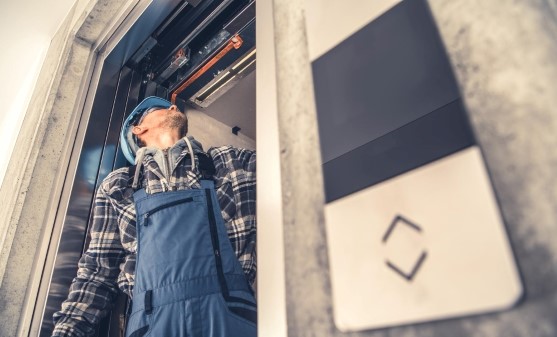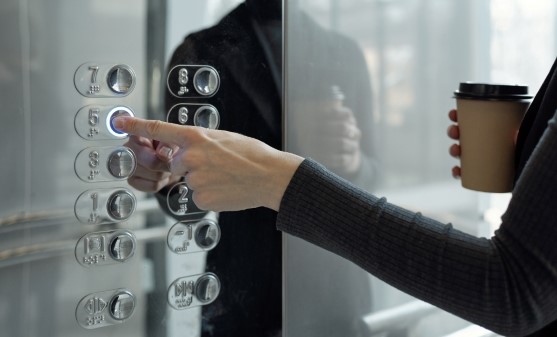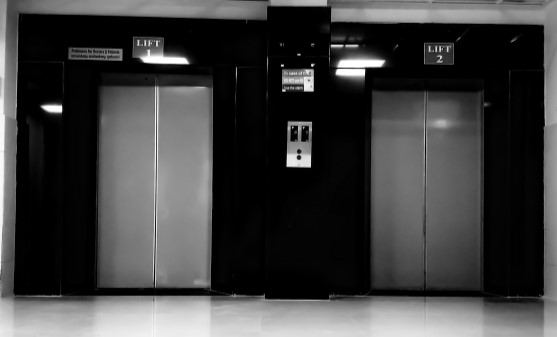What is the Elevator ITC and How Does It Affect You?
The new ITC AEM 1 “Elevators” is a technical regulation that governs the safety, maintenance, and operation conditions of elevators in Spain. Its application affects both building owners and maintenance companies and aims to strengthen safety, accessibility, and the technical efficiency of these systems.
Complying with this regulation not only avoids financial penalties but also reduces accident risks, improves user experience, and increases property value. If you manage a homeowners’ association, are a property administrator, or own a building with an elevator, this guide is for you.

What is ITC AEM 1 and What is Its Purpose?
The ITC AEM 1 (Complementary Technical Instruction) is part of the Elevator Equipment Regulation, initially governed by Royal Decree 2291/1985. The update of this regulation responds to the need to adapt lifting systems to current technological and safety advances.
Its main purpose is:
- To regulate the inspection, refurbishment, and maintenance of elevators.
- To ensure that all equipment meets minimum safety and accessibility requirements.
- To standardize technical criteria throughout the country.
- To guarantee that maintenance companies operate with high quality and responsibility standards.
Additionally, the ITC introduces new obligations related to technical documentation, maintenance traceability, and the qualification of technical personnel. This means that only authorized companies can legally operate as maintenance providers.
Which Buildings or Installations Must Comply with the ITC?
The new elevator ITC affects practically all elevators and lifts installed in Spain, whether new or old. According to the regulation, the following cases are required to comply with this standard:
- Elevators in residential buildings: Whether the building is new or old, the elevator must meet the minimum safety conditions specified by the new ITC. Homeowners’ associations are responsible for compliance.
- Elevators in public or commercial buildings: Shopping centers, hospitals, offices, hotels, and any other public-use building must also comply with the regulation.
- Industrial or logistics installations with lifting platforms: Although their design does not always resemble conventional elevators, if used for vertical transport of people, they must meet technical requirements.
- New installations: All new elevators must include specific technical documentation and undergo mandatory inspections before operation.
It is also important to highlight that inspections must be done not only after installation but periodically, especially in buildings with high occupancy or vulnerable users (children, elderly, people with reduced mobility).
What Safety Measures Does the New ITC Require?
The ITC AEM 1 has updated the minimum safety conditions that existing elevators must comply with. These measures are grouped in Annex VII of the regulation and aim to reduce accidents, mechanical failures, and risky situations for users. Some of the most notable measures include:
- Precise leveling between the cabin and the floor to avoid trips or falls.
- Protection against door closing during entry or exit from the elevator.
- Prevention of uncontrolled upward movements of the cabin.
- Mandatory two-way communication from the cabin for emergencies.
- Manual or automatic rescue system in case of power failure.
- Replacement of worn or non-approved guide rails.
- Load control to prevent overweight and accidents due to excess users.
- Reinforcement of old counterweights and modernization of mechanical systems.
These measures will be implemented gradually, but it is advisable to conduct a technical evaluation as soon as possible to determine the current condition of the elevator and avoid future immobilizations due to non-compliance.

Does your elevator comply with the new ITC? At Elevadores Vilber, we help you adapt it with warranty, speed, and no hassle.
What Are the Deadlines to Adapt to the ITC?
The enforcement of ITC AEM 1 establishes specific deadlines to make the necessary adaptations, which vary according to the type of building and the elevator’s age. Here is a summary of the main deadlines:
| Building Type | Adaptation Deadline | Mandatory Inspection |
|---|---|---|
| Public use buildings | 1 year from enforcement date | Every 2 years |
| Residential buildings > 20 dwellings | 2 years | Every 4 years |
| Residential buildings ≤ 20 dwellings | 3 years | Every 6 years |
Key dates:
- Periodic inspections become mandatory and must be notified by the maintenance company.
- In case of deficiencies, there is a limited period to fix them, or the elevator may be immobilized by the competent authority.
- Also, specific situations can trigger additional mandatory inspections, such as accidents, renovations, maintenance company changes, or anomalies reported by users.
How Does Elevadores Vilber Help You with the ITC?
Elevadores Vilber is a company specialized in installation, maintenance, and modernization of elevators with over 25 years of experience in the sector. With the enforcement of the new ITC, we offer comprehensive solutions to help you comply with the regulation without hassle:
- Personalized technical advice: We explain what measures you must apply in your installation, assessing if you comply or need to update any component.
- Initial inspections and maintenance plan: We perform an initial inspection according to UNE 192008-1 and create a personalized maintenance plan for your elevator, as required by the new ITC.
- Documentation management and notification: We handle all necessary documentation for public administration and manage mandatory notifications of periodic inspections.
- Modernization and adapted refurbishments: If your elevator does not meet any requirement, we design a modernization plan according to current regulations.
- Continuous service and qualified technicians: We have certified technicians on staff and 24/7 emergency coverage to keep your elevator always operational.
Additionally, we conduct free audits, provide a detailed technical report, and accompany you throughout the process so you don’t have to worry about anything.

What is the Difference Between ITC and ITE?
Although both acronyms sound similar, ITC and ITE refer to different concepts in the building field:
| Feature | ITC (Complementary Technical Instruction) | ITE (Technical Building Inspection) |
|---|---|---|
| What does it regulate? | Safety, maintenance, and installation of elevators | General condition of the building (structure, facade, etc.) |
| Who does it affect? | Elevator owners and maintenance companies | Owners of entire buildings |
| Is it mandatory? | Yes, since 2023 with specific deadlines | Yes, depending on local regulations (municipalities) |
| How often is it performed? | Depending on building type: 2, 4, or 6 years | Every 10 years (generally) |
In other words, the ITC is a specific regulation for elevators, while the ITE assesses the general condition of the property.
Both are mandatory in many cases and must be coordinated correctly to avoid penalties or risks.
The enforcement of the new elevator ITC implies important changes for homeowners’ associations, owners, and maintenance companies. Adapting to this regulation is not only mandatory but necessary to guarantee user safety, improve accessibility, and avoid unexpected costs.
Elevadores Vilber has a presence in Granada and Málaga, helping you comply with the ITC efficiently, legally, and tailored to your needs. Contact our technical team and receive a free diagnosis of your installation. We will guide you step by step so your elevator is fully updated, safe, and compliant.





